MOVIE TITLE: The Loneliest Whale: The Search for 52
Bleecker Street will release the film in select theaters on July 9th and On Digital July 16th, 2021.

RATING: NR (Documentary) but Rotten Tomatoes & IMDB rated it PG
LENGTH: 1 hour 36 minutes

IN A NUTSHELL:
I didn’t want to watch this film because the title sounded so sad! No one wants to feel lonely and it breaks my heart to think of another creature feeling that same emotion. My curiosity got to me and I wanted to know more about this famous whale that got everyone talking when his unique whale sound was first discovered. The number 52 refers to the unique 52 Hertz, a frequency no other whale has ever made or can understand. It had been calling out for years without ever receiving a response. Cue the tears!
In 1989 the U.S. Navy detected a mysterious signal in the Pacific Ocean. The unidentifiable sound, picked up by a top-secret, Cold War-era surveillance system designed to track enemy submarines, vibrated through the depths at an enigmatic 52 hertz. The noise was definitely not a submarine.
After months of study, Dr. William Watkins of the Woods Hole Oceanographic Institution in Massachusetts concluded this strange subaquatic rumble belonged to a whale calling out in a distinctive frequency, nothing like other whales who moved in similar migratory patterns. A whale’s call is social, but no response was ever recorded. Watkins surmised that this singular creature, nicknamed “52,” was solitary and unique, possibly the first or last of his kind, a whale unable to find a mate or bond with others of his species.
Watkins tracked 52’s song for the next 12 years, and in 2004 the whale was profiled in The New York Times. Readers around the world were spellbound by 52’s plight. Some sociologists theorized that our fascination with his story came from a growing feeling of loneliness overrunning our techno-centric society.
The Loneliest Whale: The Search for 52 examines the Cold War science of submarine warfare that led to the discovery of 52, the centuries of brutal whale hunting that brought many species to the brink of extinction, the discovery of haunting and complex whale songs that prompted a worldwide effort to save them, the growing scourge of ocean noise that disrupts the lives of whales today, and whether society’s dependence on technology is actually isolating humans from one another.
If 52 is still out there, can he be found? Is it possible to launch a search for one whale in the vastness of the world’s oceans? In the journey and the potential discovery of 52, the filmmakers take us on an exhilarating adventure toward understanding this unique creature and its link to humanity.
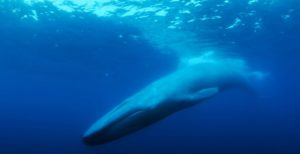
THINGS I LIKED:
- Leonardo DiCaprio loved the idea of this film so much that he donated $50,000 to fund it and became one of the Executive Producers! Another part of the funding came from a Kickstarter campaign! Another celebrity who pitched in to help with the crowdfunding project was Adrian Grenier. Actress/musician Kate Micucci sings a song about the loneliest whale and talks about why people have been so taken with this story. She noticed that the whale doesn’t even have a real name, but a number. How sad! Cue more tears.
- We learn about the research that was started when the 52 Hertz sound was first heard in the ocean. What’s surprising is that the search was dropped for a number of years. The film really draws you in and you can’t wait to get out into the ocean with the crew to see what happens.
- It’s fascinating to learn about the science and technology involved with tracking these gentle giants so humans can learn and understand more about them.
- You get to see lots of whales!
- I know a guy who used to work for a “secret government agency” many years ago. His job was to shout an alert if he heard anything unusual via sonar. In the middle of the night, he heard something and everyone went crazy. They woke up the Top Secret guys who raced over to see what it was. Whale. It was a whale. ha ha He never lived that down as all of the staff in the office laughed at him for months afterward. True story!
- The ending may surprise you!
- Before the rolling credits, the screen says, “Find connection. Heal the ocean. Lonelywhale.org “
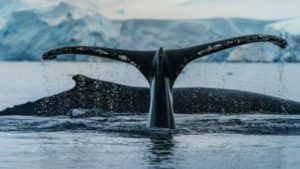
Director Joshua Zeman stated, “When I was 14 years old, I worked my first summer job as a midshipman on a 19th-century schooner in Gloucester, Mass. Part of my job required me to unfurl the flag that often tangled atop the 115-foot-high mast. Without any harness, I climbed the rigging as the ship rocked back and forth, the mast swaying in huge, looping arcs. After a few ascents, I could do it without crying.
The ship hosted whale-watching cruises for tourists looking to catch a glimpse of the animals that occupy a great place in the American psyche. From the deck, I couldn’t visualize just how large these massive beasts were. So, after a few frustrating days, I decided to climb the mast again. As I reached the top, I saw a giant humpback the size of our ship swimming right alongside us. The whale rolled on its side and its massive flipper waved in the air. At that moment, the fear left my body, and for the first time in my life, I understood just how awe-inspiring this world could be.
So, it made sense that when I first heard about the 52 Hertz Whale from animal behaviorist Dr. Vint Virga, I was hooked on the story. Here was a tale of such profound loneliness, of utter sadness; I had goosebumps. Over the next few weeks, I couldn’t stop thinking about the whale. It was a fascinating story, but I was even more intrigued by the depth of my own reaction. And as I began researching the story, I found that I wasn’t alone. People across the web and all over the world were reacting to the story as strongly as me. Even more fascinating were the countless 52 Hertz Whale-inspired paintings, plays, sculptures, and songs. These weren’t just people who had ended a relationship or parents with empty nests—this connection to the whale was universal.
As I began asking myself broader questions about loneliness in our culture, I discovered questions and ideas that have been brewing in academic circles for some time. Is our techno-centric lifestyle leading to loneliness through the erosion of real relationships? How do online chat rooms differ from true conversations?
No one’s loneliness is cut from the exact same cloth as anyone else’s, but this one story of a whale brought us all together. This creature is more alone than any of us could ever imagine, and yet refuses to give up, continues to call out, hoping to one day be heard. It is a story that I want to share with others–one that inspires us to have hope and reminds us that the bonds of love, friendship, and family we share must remain meaningful as we navigate the vast oceans of our ever-changing world.”
THINGS I DIDN’T LIKE:
- I would love to have seen a bunch of whales breach the surface and flop down in the dramatic way they do in some documentaries.

TIPS FOR PARENTS:
- Young kids will probably be bored unless they’re really into whales.
- You see some dead whales that were killed.

THEMES:
- Loneliness
- Friendship
- Language and communication
- Science and technology
- Solving mysteries
- Connection
- Listening

FUNNY LINES:
- “So, where is it?” – director Joshua Zeman after scientists spent a bunch of time explaining marine biology to him.
INTERESTING LINES:
- “The mere fact that a mystery like this can still be around just shows how wild and crazy and mysterious nature still is. We’re still coming up with things we can’t explain.” – David Rothenberg
- “We should be going after all mysteries like this.” – (I didn’t catch his name)
- “I really believe you can use music to get in touch with other species to communicate in a way where language fails.” – David Rothenberg
- “When people care, they can change the world.” – older gentleman (I didn’t catch his name)
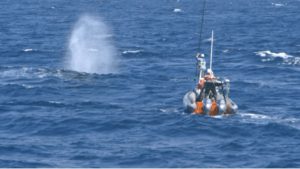
SOME FACTS ABOUT WHALES
- The best way to tell a whale’s age is by its ear wax. Just like human ears, whale ears secrete wax into the ear canal, but theirs accumulates into a tapering plug in the ear canal and can grow to nearly a foot long. A whale’s diet changes during its annual migrations, resulting in different colored layers of wax in alternating bands which can be counted, much like tree rings, to estimate a whale’s age. The composition of the wax can also indicate changes in diet, migration patterns, and habitat.
—The Atlantic, “The History of the Oceans Is Locked in Whale Earwax,” 11/21/17
- The closest “cousins” to the whale aren’t other sea mammals (like dolphins), but the hippopotamus. Hippos and whales share a common land-dwelling ancestor from between 52–47 million years ago.
—Royal Ontario Museum, “Hippos and Whales: Unlikely Cousins,” 9/24/17
- Whale songs were first identified in the 1950s. While ancient sailors sometimes attributed haunting sea melodies to mermaids, American scientists were the first to correctly identify whale songs, while listening for Russian submarines in Bermuda.
—BBC Earth, “The Loudest Voice in the Animal Kingdom”
- Whale brains don’t go to sleep at once—one hemisphere remains awake. Whales can keep one hemisphere of their brains awake (one eye as well), while the other hemisphere gets some rest. This sleep phenomenon allows them to swim and remain aware of their environment at all times.
—Scientific American, “Sleeping with Half a Brain,” 9/1/16
- A whale song can travel thousands of kilometers. Sound travels more efficiently through water than through air, and in the depths of the ocean, a fin whale call can travel more than 6,000 km (more than 3,700 miles). Baleen whales call to one another, but also employ echolocation, listening to the echoes of their calls off geographical features to map their worlds.
—BBC Earth, “The Loudest Voice in the Animal Kingdom” - Whales help to reduce climate change—with their poop. Whale poop acts as a fertilizer for tiny ocean plants called phytoplankton. Phytoplankton pulls carbon from the atmosphere and produces oxygen; a majority of the oxygen we breathe comes from these tiny plants.
—Canadian Wildlife Federation, “10 Amazing Facts About Whales That You Probably Didn’t Know,” 7/16/20

Movie Review Mom GRADE: A
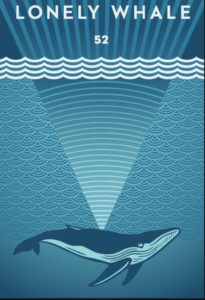
OTHER MOVIES LIKE THIS YOU MIGHT ENJOY:
Penguin Town on Netflix!
Echoes of the Invisible documentary!
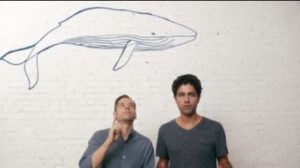
WATCH THE Movie Review Mom YOUTUBE REVIEW WITH THIS LINK:
 @TrinaBoice
@TrinaBoice
Thank you so much for your financial support on Patreon!
Be sure to check out all of the gifts you can receive when you donate to Movie Review Mom on Patreon!
https://www.patreon.com/m/MovieReviewMom












For The Animals movie review - Movie Review Mom
[…] The Loneliest Whale: https://moviereviewmom.com/the-loneliest-whale-the-search-for-52-movie-review/ […]